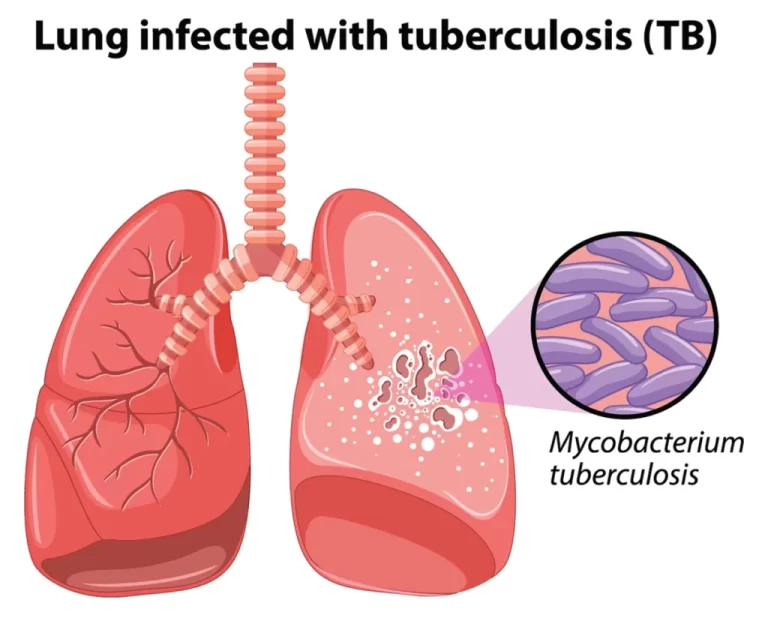Tuberculosis (TB) is a serious infectious disease that primarily affects the lungs, though it can also spread to other parts of the body. Despite advances in medicine, tuberculosis continues to be a major health issue worldwide, especially in developing countries like India. This blog will help you understand what tuberculosis is, its causes, symptoms, and the available treatment options.
What is Tuberculosis (TB)?
Tuberculosis (TB) is caused by the bacterium Mycobacterium tuberculosis. It spreads through the air when an infected person coughs, sneezes, or talks. When these tiny bacteria are inhaled, they can settle in the lungs and begin to multiply. TB can be latent (inactive) or active. In latent TB, the bacteria remain in the body without causing illness, while active TB makes you sick and can be contagious.
Causes of Tuberculosis
The main cause of tuberculosis is exposure to the bacterium Mycobacterium tuberculosis. This bacterium is highly contagious and spreads easily from person to person. Anyone can contract TB, but certain factors can increase the risk:
- Weakened immune system: People with HIV, diabetes, or those undergoing cancer treatment have a weakened immune system, making them more susceptible to TB.
- Living or working in crowded places: TB spreads more easily in areas with poor ventilation, such as hospitals, prisons, or densely populated areas.
- Age: Elderly people and children are more at risk of developing active tuberculosis.
- Substance abuse: Alcohol, tobacco, and drug use can weaken your immune system, increasing the risk of TB infection.
Symptoms of Tuberculosis
Recognizing the symptoms of tuberculosis is essential for early detection and treatment. The symptoms of TB vary depending on whether you have latent or active TB. In latent TB, the bacteria remain inactive, and there are no symptoms. In active TB, symptoms can include:
- Persistent cough (lasting more than three weeks)
- Chest pain
- Coughing up blood or sputum (a thick mucus from the lungs)
- Fever and chills
- Fatigue and weakness
- Night sweats
- Loss of appetite and unintended weight loss
It’s important to note that these symptoms may vary depending on which part of the body is affected. TB can affect organs other than the lungs, such as the kidneys, spine, or brain. This is called extrapulmonary TB and may present different symptoms depending on the affected area.

How Tuberculosis is Diagnosed
Early diagnosis of tuberculosis is critical to prevent the disease from spreading. TB is usually diagnosed using several methods:
- Tuberculin skin test (TST): A small amount of tuberculin is injected into the skin. If a raised bump appears after 48 to 72 hours, it may indicate TB infection.
- Blood test: A blood test can check for the presence of TB bacteria in the body.
- Chest X-ray or CT scan: Imaging tests can help detect signs of TB in the lungs.
- Sputum test: This test involves examining the mucus that is coughed up to check for TB bacteria.
Treatment Options for Tuberculosis
Fortunately, tuberculosis is treatable, and most people recover fully with the right care. The treatment of TB typically involves antibiotics, and the course of treatment can last anywhere from six to nine months. The most common drugs used to treat TB include:
- Isoniazid
- Rifampin
- Ethambutol
- Pyrazinamide
These drugs are usually given in combination to prevent the development of drug-resistant TB. For latent TB, doctors may prescribe just one or two medications. However, for active TB, a combination of antibiotics is required to fully eradicate the infection.
Treatment for Drug-Resistant TB
One of the growing concerns in tuberculosis treatment is the rise of drug-resistant TB. Drug-resistant TB occurs when the bacteria become resistant to the antibiotics used to treat the infection. This makes the disease more difficult to treat. In such cases, doctors use second-line drugs, which can have more side effects and require longer treatment periods.
Preventing Tuberculosis
Preventing tuberculosis involves several strategies, particularly for those living in high-risk areas or working in healthcare settings. Some prevention methods include:
- Vaccination: The BCG vaccine is commonly administered to children in countries with a high prevalence of TB.
- Good ventilation: Ensuring that living or working spaces have proper ventilation helps prevent the spread of TB bacteria.
- Wearing masks: Health workers or those living with an infected person should wear masks to reduce the risk of transmission.
- Regular screening: Regular testing for TB, especially for high-risk individuals, helps in early detection and treatment.
Conclusion
Tuberculosis (TB) remains a global health concern, but with early detection and proper treatment, it can be controlled and cured. Understanding the causes, symptoms, and treatment options is crucial in fighting this disease. If you or someone you know is showing signs of TB, it is important to seek medical advice immediately.
At Anand Hospital Meerut, our team of healthcare professionals is equipped to provide comprehensive care and treatment for tuberculosis. With proper diagnosis and management, we are committed to helping our patients overcome this condition and lead healthy lives.
For more information or to schedule an appointment, contact us today!

